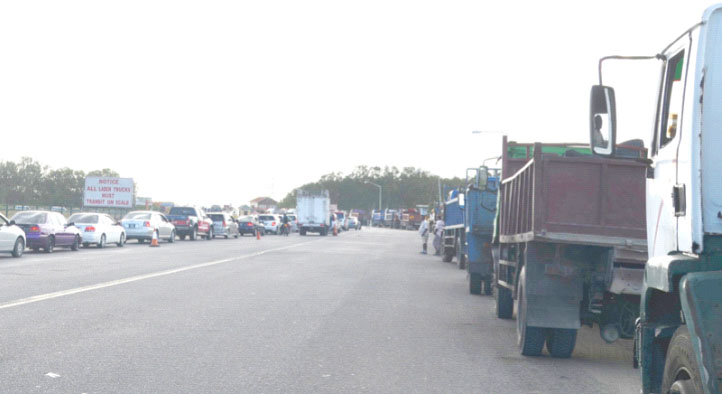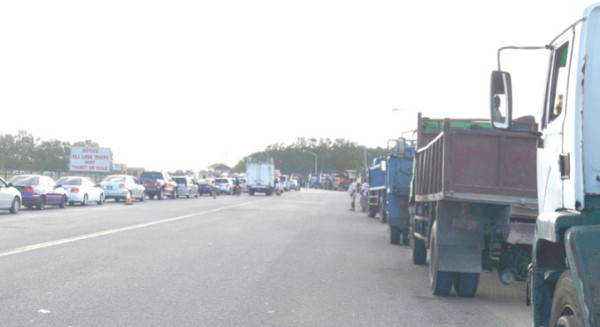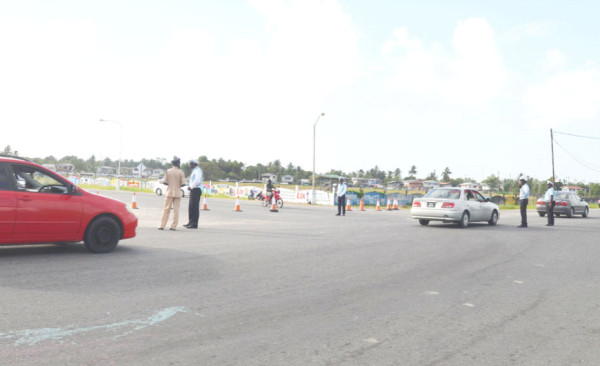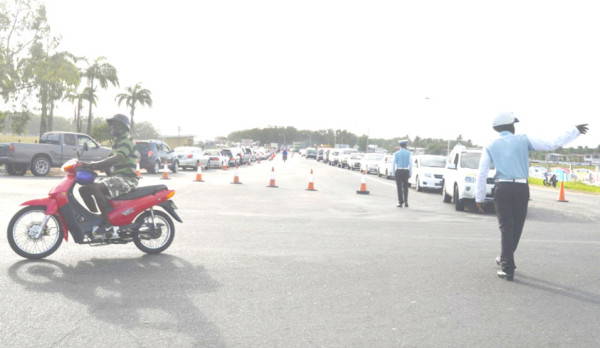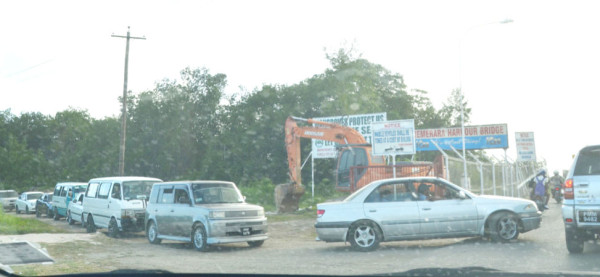Commuters, frustrated about the hassle to cross the Demerara Harbour Bridge (DHB) during the early morning rush-hour traffic, are asking for a solution to ease the situation.
They told this newspaper that they would have to leave home around 6 am to reach in time for their 8 am jobs and find it very inconveniencing.
During a brief interview, general manager of the DHB, Rawlston Adams said they were looking at reducing the congestion at the bridge.
As such, he is scheduling a meeting with the Minister of Public Infrastructure, David Patterson and the Commander of ‘D’ Division, Stephen Mansell.
He has already had “some discussions with the police and we have committed to adding some barriers,” which would help to keep the traffic under control.
According to the commuters, if they reach at the bridge around 6:30 am they would be caught in the traffic where vehicles would move at “snail’s pace.”
What angers them, is that they would join the line and wait their turn to cross but other drivers “would just come from way behind and cut in and get to cross before us.”
“If they wait their turn, then we won’t have so much delays. We would like those in authority to find some solution to this madness,” they lamented.
They are happy with the police presence at the bridge and said, “If they were not there, the confusion would have been greater.”
On Friday, the police were out in full force with barriers at the head of the access road and at the bridge approach.
It was observed that there was a long line on the main road as well as in the streets on both sides close to the bridge. The police allowed vehicles from all three ends, a turn to get across.
A few trucks had been parked in a corner since 6:30 am and had to wait until 8 am to cross. It was normal for the trucks to be parked there every day.
A police source told Stabroek News that they are aware of the congestion and that the bridge officials had opened it to double lane traffic from 7 am to 7:25 am on working days.
He said that while this has made a lot of difference, it is not enough to take off the large number of vehicles, which keeps increasing daily.
According to him, over 10,000 vehicles cross at that time and the only way to bring the traffic congestion under control is to have another double lane from 8 to 8:15 am.
When this newspaper visited on Friday morning there was a scheduled 8:30 opening. The source said that a double lane would be opened at 8 am “to get rid of all these vehicles.”
He said the drivers cross via a “line system but the problem is that a lot of people would leave their homes late and they join into the traffic.”
On the other side of the bridge there was no long line of vehicles heading for the tollbooth.
Adams said they would have to review the second opening for double lane, but noted that such a move would have “implications” because the maintenance crew has to get its equipment on the bridge and get down to work during the high tide.
“We still have a responsibility to maintain the bridge,” Adams pointed out. But “it would have impact on their maintenance regime,” which cannot be delayed.
Asked whether the maintenance can be done at another time other than the ‘rush hour,’ he res-ponded that, “maintenance is a factor of the tide. The tide doesn’t wait…”
He said that at times “the situation demands that we have to get out there and get it [work] done” and they cannot wait on another tide that would come until the next day.
In response to the possibility of working at night, Adams said there are certain types of work that they do at nights but getting down in the river would require proper lighting.
He also pointed to the fact that the bridge has only one maintenance crew, which means that they cannot work both in the day and night.
On Friday, no maintenance could have been done during the high tide because the traffic had to be cleared in preparation for the 8:30 opening.
According to Adams, it is “striking a balance between traffic and maintenance… and that is not as easy as it looks.”
